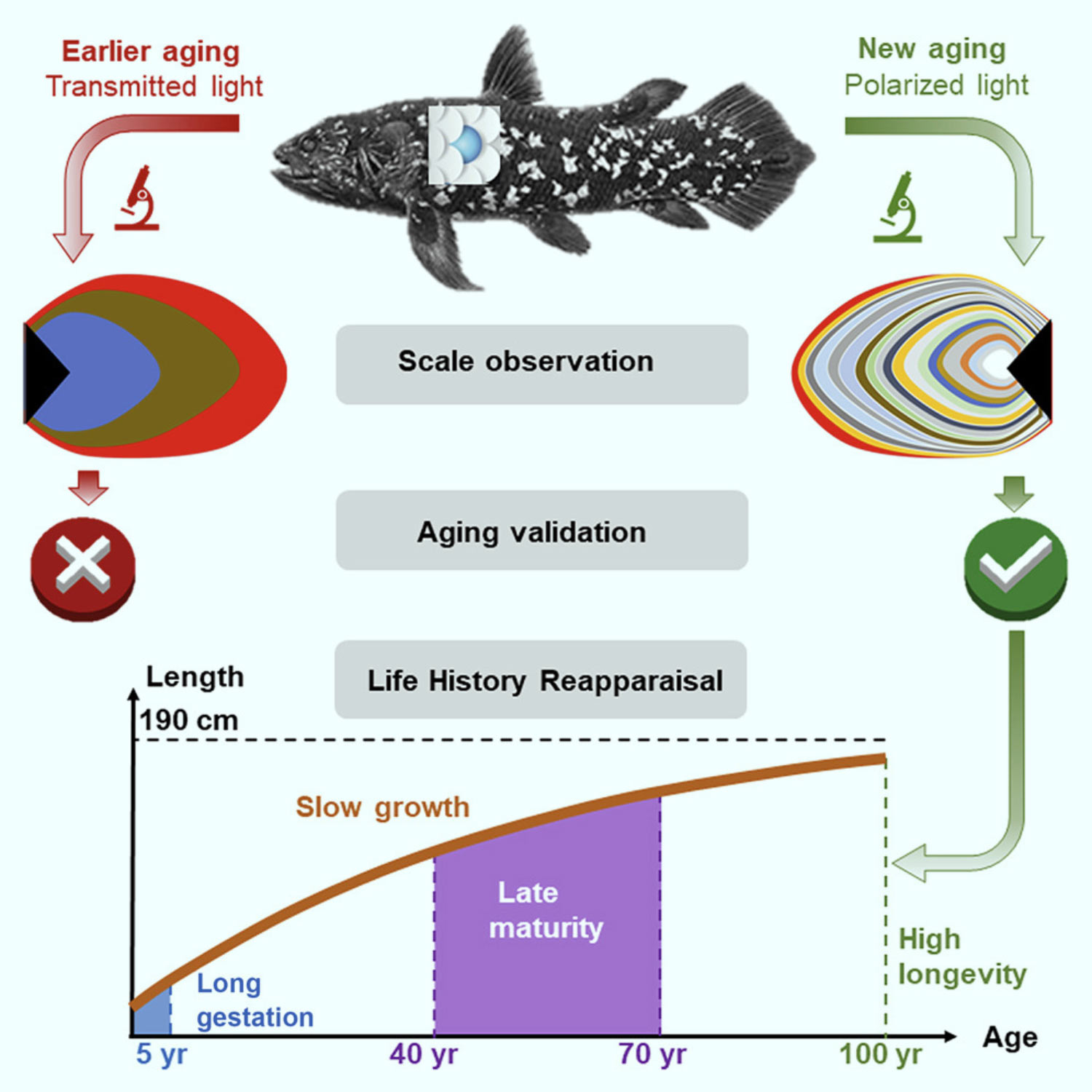
African coelacanths (Latimeria chalumnae) reach maturity around the age of 55 and gestate their offspring for 5 years, according to a study published in the journal Current Biology.
Latimeria chalumnae off Pumula on the KwaZulu-Natal South Coast, South Africa, on November 22, 2019. Image credit: Bruce Henderson, doi: 10.17159/sajs.2020/7806.
Coelacanths are large lobe-finned fish (sarcopterygians) that were thought to be extinct for 65 million years, until a first living specimen was caught fortuitously in South Africa in 1938.
There are two living species: Latimeria chalumnae form the Comoros Islands off the east coast of Africa, and Latimeria menadoensis from the waters off Sulawesi, Indonesia.
Considered critically endangered, Latimeria chalumnae is characterized by a large body size that can reach up to 2 m (6.6 feet) in length and weigh up to 105 kg, with large length at maturity (around 1.5 m, or 4.9 feet).
These fish are ovoviviparous, produce a relatively small number of offspring, and have a large size at birth (around 35 cm, or 14 inches).
They are thought to be a nocturnal drift-hunter, and their unique movements are generally slow, though they can exhibit fast-start escape responses.
They have a slow metabolism often thought to be associated with their energy-saving mode of life, typical of deep-water species.
Earlier studies attempted to age Latimeria chalumnae by directly observing growth rings on the scales of a small sample of 12 specimens. Those studies led to the notion that the fish didn’t live more than 20 years.
In the current study, Dr. Kélig Mahé from the Fisheries Laboratory at IFREMER and colleagues used new methods, including polarized light microscopy and scale interpretation technology, to study growth on scales based on a large sample of 27 Latimeria chalumnae specimens.
The researchers found that their oldest specimen was approximately 84 years old.
“Our most important finding is that the coelacanth’s age was underestimated by a factor of 5,” Dr. Mahé said.
“Our new age estimation allowed us to re-appraise the coelacanth’s body growth, which happens to be one of the slowest among marine fish of similar size, as well as other life-history traits, showing that the coelacanth’s life history is actually one of the slowest of all fish.”
Like deep-sea sharks with a reduced metabolism, the coelacanth has among the slowest growth for its size. Image credit: Mahé et al., doi: 10.1016/j.cub.2021.05.054.
While earlier studies relied on more readily visible calcified structures called macro-circuli to age the coelacanths much as counting growth rings can age a tree, the new approaches allowed the scientists to pick up on much tinier and nearly imperceptible circuli on the scales.
“We demonstrated that these circuli were actually annual growth marks, whereas the previously observed macro-circuli were not,” Dr. Mahé said.
“It meant that the maximum longevity of coelacanth was 5 times longer than previously thought, hence around a century.”
The analysis of two Latimeria chalumnae embryos showed they were both about 5 years old.
Using a growth model to back-calculate gestation length based on the size of offspring at birth, the authors got the same answer.
They now think that coelacanth offspring grow and develop for 5 years inside their mothers prior to birth.
“Coelacanth appears to have one of, if not the slowest life histories among marine fish, and close to those of deep-sea sharks and roughies,” Dr. Mahé said.
_____
Kélig Mahé et al. New scale analyses reveal centenarian African coelacanths. Current Biology, published online June 17, 2021; doi: 10.1016/j.cub.2021.05.054
 #Bizwhiznetwork.com Innovation ΛI |Technology News
#Bizwhiznetwork.com Innovation ΛI |Technology News



